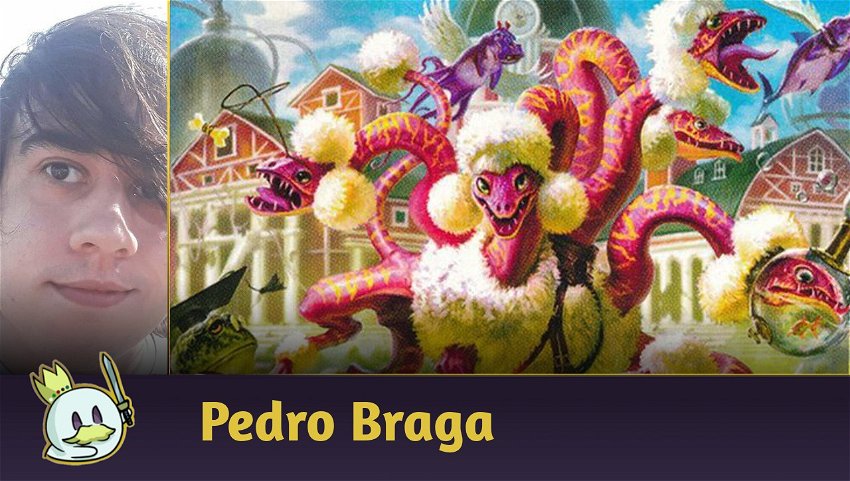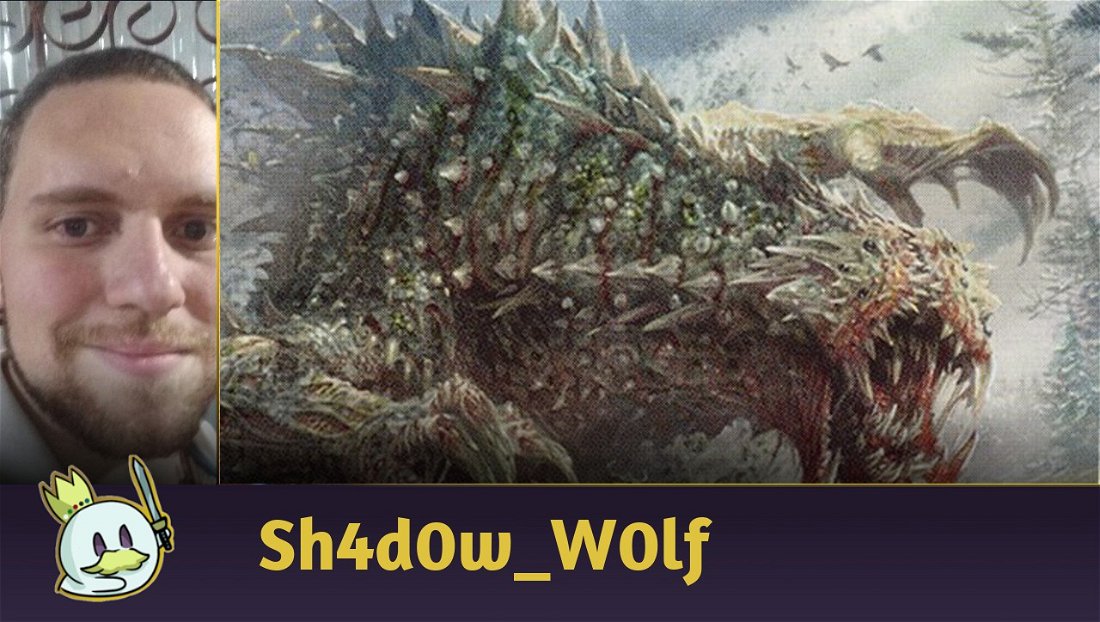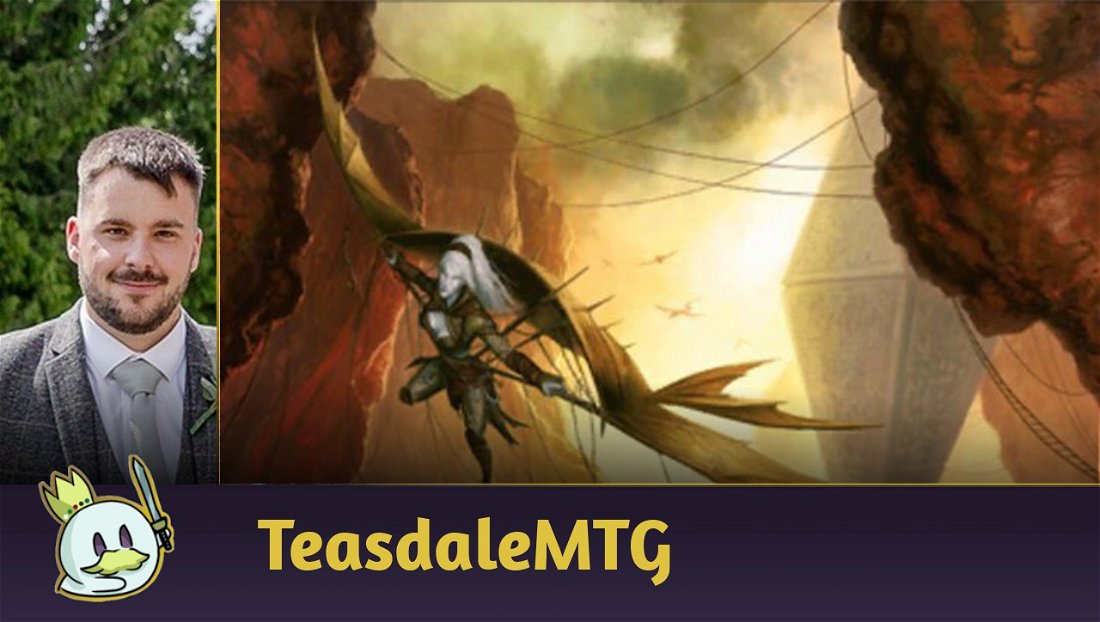In the big world of Magic: The Gathering, we find all kinds of abilities in all kinds of creatures. Among them, we have simple ones, such as flying, other more complicated ones, such as flanking, and even those that are very complex and even half-forgotten, as is the case of banding.
Trample is right in the middle ground. It is present in every set and, in a way, it is commonplace among players, just like flying. Even so, it is full of interesting particularities and unusual situations that can tie a knot in players' heads.
What is Trample?

Usually attributed to large creatures, mainly on green, Trample is a very aggressive mechanic. Its text reads: "This creature can deal its excess combat damage to the player, planeswalker, or battle it's attacking."
That is, when a creature with trample hits, all damage not used to kill the creatures it battled with goes to the target it's attacking, whether it's a player or a permanent that might have been declared as a target.
Trample appeared in Alpha as a complete and established keyword, which is different from Vigilance, for example, which started with long text and was transformed over time into its own keyword. The most famous card in the set with the ability is Force of Nature, known for going over everything in front of it (but of course, that was a long time ago, nowadays, there are cards much more optimized when it comes to cost /benefit).

Even though we had to pay an upkeep cost of our green mana to not sacrifice this creature, it was the most powerful threats back then, able to finish slow games at the time thanks to its bulky stats and its ability.
Interactions with Trample
Among the many situations in which Trample can appear in the game, there are those that stand out for being more complicated and emblematic. Trample with Deathtouch, Trample against Protection, and Trample against Indestructible, for example.
Trample and Deathtouch
The first is the simplest. Trample, when coupled with Deathtouch, creates the best possible situation for your attacking creature. As much as your 5/5 creature with both abilities is blocked by a 0/10, deathtouch gives us the ability to destroy a blocking creature by dealing at least 1 point of damage.
Then, as the ability redirects excess damage to its controller, the other 4 points of damage would be played directly against your opponent's life or another target you attacked.
Unfortunately, we don't have creatures that already come naturally with both abilities, being necessary to obtain them somehow through equipment, enchantments and others. Cards like Majestic Myriarch and Odric, Lunarch Marshal that are great at aggregating keywords according to creatures present on the board, exile or graveyard, and have the ability to assimilate keywords easily, making them great attackers.
Trample and Protection/Indestructible
If we look closely in our Magic rulebooks, we'll find rule 702.19b, and yes, the game has at least that many rules. This clause talks precisely about how trample behaves with abilities that prevent the creature from being destroyed or taking damage. It basically says that before combat rolls, the player controlling the trampler must designate the damage that will be dealt to the blocking creature. Assigning and dealing damage are entirely different steps and just serve as metrics for the game math to roll.
Thus, in a hypothetical combat in which we attack with a 7/7 green creature with trample and that will be blocked by a 3/3 with protection from green (or indestructible), we must first designate the intention of damage that we want to cause, the minimum to hypothetically destroy the target creature, 3 damage, then proceed with trample damage calculations that will deal the excess 4 damage to the opponent. So, even if the blocking creature isn't going to die, we must declare the intent of the damage to be dealt.

In another unusual situation, that can occur when using a deck that benefits from sacrifices, with cards like Syr Konrad, the Grim, for example.
When attacking with a 7/7 with trample, if we are blocked by a Phyrexian Obliterator, according to the rules, it is possible to assign all 7 damage to the Obliterator, and thus sacrifice seven permanents. Assigning combat damage along with trample is super important and will solve many headaches when talking about rules.
Trample against a blocker that is no longer on the battlefield
This is another one that happens a lot, but it's the simplest to calculate, actually. Let's say your creature with trample, a Botanical Brawler which is currently 5/5, and is blocked by anything the opponent has, a token, perhaps.
The opponent then casts a Village Rites to sacrifice the blocking creature and draw cards. So, your Botanical Brawler stands there punching the air, just like that friend of yours after a few drinks. The question is, if our Brawler no longer has a creature to deal damage, is there a damage surplus to be calculated?
And luckily, not only is the answer yes, it's the best possible answer. If a creature is removed from combat, all damage that would be directed at it is calculated as excess damage, and can then be redirected to the opponent or even to the next creature that would be dealt damage, in the case of multiple blockers.
This type of situation is also very common when mixing Double Strike and Trample. Often, the blocker can die in the step reserved for the first damage step, leaving your trample ready to deal the full second damage to the opponent. Pretty simple, isn't it?
The Ride Down card does just that, not only does it destroy a blocker, it also gives the creature blocked by it Trample, causing the damage to almost always pass smooth on the opponent, as if there were no blocks.
Best Cards with Trample
As with any ability, when we mention Trample it's obvious that there are cards that make the best use of it. Below we will talk about some of them.
Thrasta, Tempest's Roar

Thrasta, Tempest's Roar is a very interesting creature, because it is the only one released so far that has the ability “Trample over Planeswalkers”, that is, the excess damage it deals to a Planeswalker is directed to the player who controls it. With this background, who knows, maybe one day there will be a “Trample over Battles”?
This leads to extremely unusual situations and the official rules that comprise the card are very interesting, including covering a possible situation where the Planeswalker is turned into a creature and has both types at the same time, which would make it possible for the attacked Planeswalker to block it, leaving the damage calculation very different, but with the excess still directed to the defending player.
Since Deathtouch doesn't destroy Planeswalkers unless abilities say otherwise, Trample over Planeswalkers doesn't interact the same way as conventional Trample, so watch out.
Primeval Titan

Here we have a card that is not only known for being pretty strong, but also makes use of some mechanics that we've discussed before. Primeval Titan is not only one of the strongest creatures in Modern, a format known for its high interaction and playability, with many complex decisions to be made at each turn, but it is also banned from Commander, due to its great ability to ramp and tutor any lands, bringing a lot of versatility to it.
A regular target for him is Sunhome, Fortress of the Legion, a card capable of giving double strike, which will interact wonderfully with his trample ability, dealing high damage.
Craterhoof Behemoth

A card that is the endgame in Elves in Legacy and a monster in Commander. Craterhoof Behemoth doesn't have the trample mechanic directly printed on its card, but it can gain it, and give it to other creatures you control, the turn it comes into play, in addition to making them grow.
Combining it with elves, it's not hard to have a myriad of huge/huge trampling creatures on the board. It's the perfect card to end matches and friendships.
Embercleave

Few cards had won more games in the past Standard than Embercleave. Combining the ability to trample and double strike a creature, as well as the ability to be cast for cheap, with Flash, and equipped to an attacking creature, this was indeed a card to be feared in aggressive decks.
Even today, Embercleave has a different strength. It is not only strong when it can be cast, but because it causes anticipation. After finishing a game with it, your opponent will never forget it, and you will be able to make attacks that would otherwise be risky much more naturally thanks to the anxiety that the legendary sword causes.
Berserk

This one is a favorite of mine. Not only does it double an attacking creature's power, it also gives it trample.
It's always more than enough to finish matches, and at a super affordable price of one green mana. It has all the best qualities of Embercleave and is in a color that makes a great synergy with the ability, allowing to have huge creatures on the battlefield.
Of course, the creature will be destroyed at the end of the turn, but the idea is that once you cast it, the game is already over, right?
Conclusion
I have to say that after reflecting on this keyword, I realized that I really like it. Trample ends games easily and is full of different interactions with many situations. It works well for learning new and complicated rules, but they always come into play, creating very exciting and unpredictable outcomes.
And of course, rooting in advance for “Trample over Battles” to appear in the future. Until the next time!














— Commenti 0
, Reazioni 1
Diventa il primo a commentare